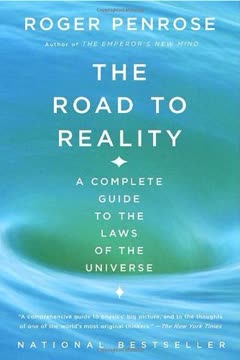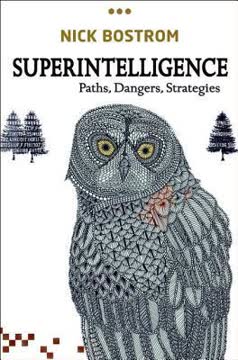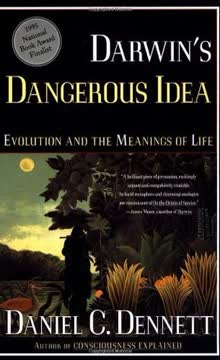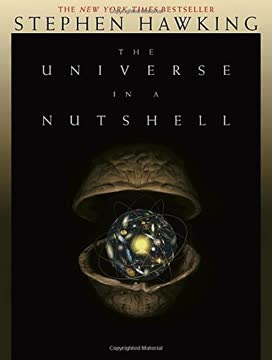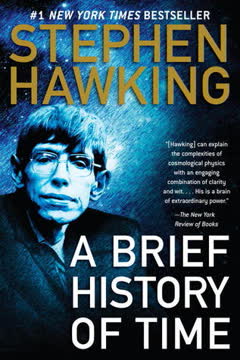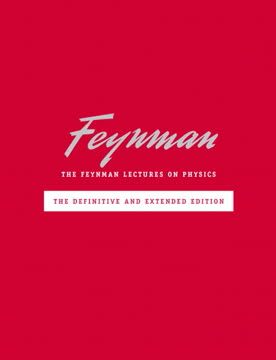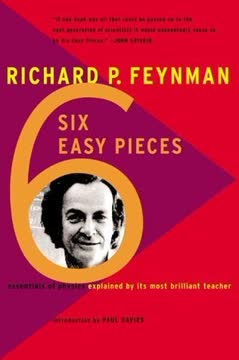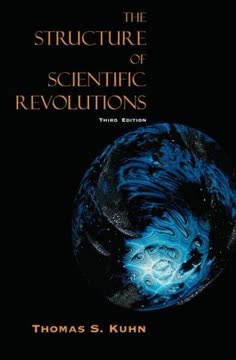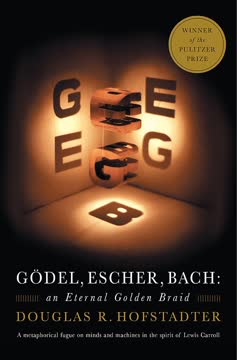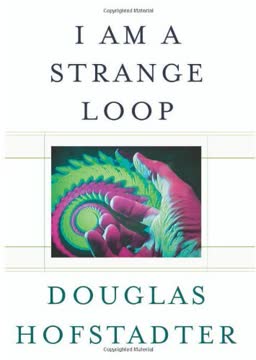Key Takeaways
1. הריקוד המשולב של לוגיקה ואמנות
"הנושא המרכזי של ספר זה הוא שהמבנים הלוגיים המהווים את הבסיס למתמטיקה משתקפים במוזיקה ובאמנות."
מבנים בסיסיים. הספר חוקר את הרעיון ששדות שנראים שונים כמו מתמטיקה, מוזיקה ואמנות חולקים מבנים בסיסיים משותפים. מבנים אלו, המבוססים לעיתים קרובות על לוגיקה ודפוסים, אינם רק מושגים מופשטים אלא נטועים עמוק בדרך שבה אנו תופסים ויוצרים.
דוגמאות למבנים משותפים:
- רצפים מתמטיים כמו רצף פיבונאצ'י מופיעים ביצירות מוזיקליות ובצורות טבעיות.
- המושג של חזרה, הנמצא בפונקציות מתמטיות, משתקף בטבעו העצמי-מכוון של חלק מהאמנות והמוזיקה.
- סימטריה, מושג מרכזי בגיאומטריה, היא גם אלמנט יסודי באמנות חזותית ובהרמוניה מוזיקלית.
גישור הפער. הספר מאתגר את ההפרדה המסורתית בין לוגיקה לאמנות, ומציע שהן אינן סותרות זו את זו אלא דרכים משלימות להבנת העולם. על ידי חקר הקשרים הללו, אנו מקבלים הערכה עמוקה יותר לעושר ולמורכבות של המחשבה האנושית.
2. רמות משמעות: מסמלים לתודעה
"משמעות היא מושג מאוד חלקלק, ואין זה ברור כלל שיש מושג אחד, מוגדר היטב של משמעות."
מערכות היררכיות. הספר עוסק ברעיון שמשמעות אינה ישות קבועה אלא מתעוררת מתוך היררכיה של רמות. ברמה הנמוכה ביותר, יש לנו סמלים, שהם סימנים או צלילים שרירותיים. סמלים אלו משולבים לאחר מכן ליצירת מבנים מורכבים יותר, כמו מילים, משפטים ומשוואות מתמטיות.
משמעות מתעוררת. משמעות נובעת מהקשרים בין סמלים אלו ומההקשר שבו הם משמשים. היא אינה טמונה בסמלים עצמם אלא מתעוררת מתוך האופן שבו הם מתקשרים בתוך מערכת.
תודעה כפסגה. הספר מציע שהתודעה עצמה יכולה להיחשב כרמה הגבוהה ביותר של משמעות, מערכת מורכבת של סמלים וקשרים שמביאה לידי ביטוי את המודעות העצמית והחוויה הסובייקטיבית. פרספקטיבה זו מאתגרת אותנו לשקול כיצד נבנית ומפורשת משמעות ברמות שונות של קיום.
3. הפניה עצמית ולולאות מוזרות
"לולאה מוזרה מתעוררת בכל פעם, כאשר, על ידי תנועה רק כלפי מעלה (או רק כלפי מטה) דרך הרמות של מערכת היררכית כלשהי, אתה מוצא את עצמך באופן בלתי צפוי חוזר לנקודת ההתחלה."
מערכות הפניה עצמית. המושג של הפניה עצמית, שבו מערכת מפנה את עצמה, הוא נושא חוזר בספר. רעיון זה נבחן דרך דוגמאות כמו ציורי אשר, שבהם דימויים מכילים את עצמם, וקנונים של באך, שבהם מוטיבים מוזיקליים חוזרים על עצמם.
לולאות מוזרות. מערכות הפניה עצמית אלו לעיתים קרובות יוצרות "לולאות מוזרות," שבהן תנועה דרך היררכיה מובילה חזרה לנקודת ההתחלה. זה יוצר תחושת פרדוקס ומאתגר את ההבנה הליניארית שלנו של סיבה ותוצאה.
השלכות להבנה. לולאות מוזרות אינן רק מושגים מופשטים אלא גם נמצאות בדרך שבה אנו חושבים על עצמנו ועל העולם. הן מדגישות את המגבלות של חשיבה ליניארית ואת הקשרים ההדדיים בין רמות שונות של מציאות.
4. איזומורפיזם: המראה של מבנים
"איזומורפיזם הוא רעיון מאוד חזק, והוא המפתח להבנת כיצד מערכות שונות יכולות לשקף זו את זו."
דמיון מבני. איזומורפיזם מתייחס לקיום של מבנים דומים במערכות שונות. משמעות הדבר היא ששתי מערכות שנראות לא קשורות יכולות להתממשק זו עם זו, לחשוף דמיון בסיסי בארגון ובתנהגות שלהן.
דוגמאות לאיזומורפיזם:
- המבנה של פוגה מוזיקלית יכול להתממשק למבנה של הוכחה מתמטית.
- הדפוסים בציור יכולים להתממשק לדפוסים בנוף טבעי.
- הכללים של מערכת פורמלית יכולים להתממשק לכללים של משחק.
חשיפת קשרים נסתרים. איזומורפיזם מאפשר לנו לראות מעבר להבדלים שטחיים בין מערכות ולגלות קשרים עמוקים יותר. הוא מציע שהיקום אינו אוסף של ישויות מבודדות אלא רשת של מבנים מקושרים.
5. מערכות פורמליות: כללי המשחק
"מערכת פורמלית היא אוסף של סמלים, יחד עם אוסף של כללים למניפולציה של סמלים אלו."
מניפולציה של סמלים. מערכות פורמליות הן מבנים מופשטים המורכבים מסמלים וכללים למניפולציה של סמלים אלו. מערכות אלו הן הבסיס למתמטיקה וללוגיקה, ומספקות מסגרת להסקה ולחישוב.
דוגמאות למערכות פורמליות:
- גיאומטריה אוקלידית, עם האקסיומות והמשפטים שלה
- לוגיקה פרופוזיציונלית, עם הסמלים וכללי ההסקה שלה
- שפות תכנות, עם התחביר והסמנטיקה שלהן
מגבלות של מערכות פורמליות. בעוד שמערכות פורמליות הן כלים רבי עוצמה להסקה, הן גם נתונות למגבלות. משפט האי-שלמות של גדל, הנדון מאוחר יותר בספר, מדגים שיש גבולות פנימיים למה שניתן להוכיח בתוך מערכת פורמלית.
6. משפט האי-שלמות של גדל: מגבלות הלוגיקה
"כל הניסוחים האקסיומטיים הקונסיסטנטיים של תורת המספרים כוללים טענות שאינן ניתנות להכרעה."
מגבלות פנימיות. משפט האי-שלמות של גדל הוא תוצאה מכוננת בלוגיקה מתמטית. הוא קובע שבכל מערכת פורמלית שהיא חזקה מספיק כדי לבטא אריתמטיקה בסיסית, תמיד יהיו אמיתות שלא ניתן להוכיח בתוך המערכת עצמה.
השלכות המשפט:
- יש מגבלות פנימיות למה שניתן להוכיח באמצעות לוגיקה בלבד.
- אף מערכת פורמלית לא יכולה להיות גם שלמה וגם קונסיסטנטית.
- המתמטיקה אינה מערכת סגורה אלא חקירה פתוחה.
מעבר למערכות פורמליות. משפט גדל מציע שהבנה אנושית חורגת מהמגבלות של מערכות פורמליות. הוא מדגיש את תפקיד האינטואיציה, היצירתיות והמודעות העצמית ביכולת שלנו לתפוס רעיונות מורכבים.
7. אינטליגנציה מלאכותית: האם מכונות יכולות לחשוב?
"השאלה האם מכונות יכולות לחשוב אינה שאלה מדעית, אלא שאלה פילוסופית."
מבחן טיורינג. הספר חוקר את השאלה האם מכונות יכולות לחשוב, לעיתים קרובות מתייחס למבחן טיורינג כמדד לאינטליגנציה מלאכותית. מבחן טיורינג מציע שאם מכונה יכולה לחקות שיחה אנושית בצורה משכנעת, היא יכולה להיחשב אינטליגנטית.
מעבר לחיקוי. הספר טוען שעבור מכונה לעבור את מבחן טיורינג אינו מספיק כדי להוכיח תודעה אמיתית או הבנה. הוא מעלה שאלות לגבי טבע החוויה הסובייקטיבית והאם מכונות יכולות אי פעם להחזיק בה באמת.
המגבלות של חישוב. הספר מציע שהתודעה עשויה שלא להיות ניתנת לצמצום לחישוב בלבד. הוא חוקר את האפשרות שיש היבטים במחשבה האנושית שאינם ניתנים לתפיסה על ידי אלגוריתמים או מערכות פורמליות.
8. טבע התודעה: תעלומה עמוקה
"התודעה היא תופעה מאוד מוזרה, ואנחנו עדיין רחוקים מאוד מהבנתה."
חוויה סובייקטיבית. הספר עוסק במסתורין של התודעה, החוויה הסובייקטיבית של להיות מודע. הוא חוקר את השאלה כיצד תהליכים פיזיים במוח מביאים לידי ביטוי את עולמנו הפנימי של מחשבות, רגשות ותחושות.
הבעיה הקשה של התודעה. הספר מכיר ב"בעיה הקשה" של התודעה, המתייחסת לקושי להסביר כיצד ולמה יש לנו חוויות סובייקטיביות. הוא מציע שבעיה זו עשויה לדרוש שינוי יסודי בהבנת הקשר בין נפש לחומר.
חקר הלא נודע. הספר מעודד אותנו לאמץ את המסתורין של התודעה ולהמשיך לחקור את גבולות ההבנה האנושית. הוא מציע שהמאמץ להבין את התודעה הוא אחד מהמאמצים העמוקים והאתגרים ביותר של זמננו.
9. מוזיקה, אמנות והמוח: הדהודים של מבנה
"מוזיקה היא מראה של המוח, והיא משקפת את המבנים של תהליכי החשיבה שלנו."
הדהוד קוגניטיבי. הספר חוקר את הרעיון שמוזיקה ואמנות אינן רק חוויות אסתטיות אלא גם משקפות את המבנים הבסיסיים של מוחנו. הוא מציע שהמוחות שלנו מחוברים להגיב לדפוסים, סימטריות וצורות ארגון אחרות.
דוגמאות להדהוד קוגניטיבי:
- השימוש חזרה ושינוי במוזיקה משקף את הדרך שבה אנו מעבדים מידע.
- השימוש בפרספקטיבה ובקומפוזיציה באמנות משקף את הדרך שבה אנו תופסים את העולם.
- ההשפעה הרגשית של מוזיקה ואמנות קשורה לאופן שבו הן מהדהדות עם המבנים הקוגניטיביים והרגשיים שלנו.
הבנה עמוקה יותר. על ידי חקר הקשרים בין מוזיקה, אמנות והמוח, אנו מקבלים הבנה עמוקה יותר של עצמנו ושל הדרך שבה אנו חווים את העולם. זה מציע שצורות הביטוי הללו אינן רק חפצים תרבותיים אלא גם חלונות לתוך פעולתה של תודעתנו.
10. היופי והמורכבות של העצמי
"העצמי הוא לולאה מוזרה, מערכת הפניה עצמית שממשיכה ליצור וליצור את עצמה."
העצמי כמערכת. הספר מסיים בחקר המושג של העצמי כמערכת מורכבת, הפניה עצמית. הוא מציע שהתחושה שלנו של זהות אינה ישות קבועה אלא תהליך דינמי של יצירה עצמית ופירוש עצמי.
הפרדוקס של העצמי. העצמי הוא גם הנושא וגם האובייקט של המודעות שלו, יוצר לולאה מוזרה שהיא גם מרתקת וגם מבלבלת. פרדוקס זה מדגיש את המורכבות הטבועה בתודעה האנושית.
אימוץ המסע. הספר מעודד אותנו לאמץ את מסע גילוי העצמי ולהעריך את היופי והמורכבות של המוחות שלנו. הוא מציע שהמאמץ להבין את עצמנו הוא מאמץ לכל החיים שהוא גם מאתגר וגם מתגמל.
Last updated:
FAQ
1. What is "Gödel, Escher, Bach: An Eternal Golden Braid" by Douglas R. Hofstadter about?
- Interdisciplinary Exploration: The book explores deep connections between mathematics, art, and music, using the works of logician Kurt Gödel, artist M.C. Escher, and composer Johann Sebastian Bach as central figures.
- Self-Reference and Recursion: Hofstadter investigates the concept of self-reference and recursion, showing how these ideas appear in logic, art, and music.
- Consciousness and Intelligence: The book delves into the nature of human thought, consciousness, and artificial intelligence, asking how meaning and mind emerge from formal systems.
- Dialogues and Playfulness: Through playful dialogues and analogies, Hofstadter makes complex ideas accessible, blending narrative, puzzles, and philosophical inquiry.
2. Why should I read "Gödel, Escher, Bach" by Douglas R. Hofstadter?
- Unique Intellectual Journey: The book offers a one-of-a-kind journey through mathematics, philosophy, art, and music, appealing to readers interested in how different disciplines intersect.
- Understanding of Consciousness: It provides a thought-provoking examination of consciousness, self-awareness, and the possibility of artificial intelligence.
- Engaging and Creative Style: Hofstadter’s use of dialogues, puzzles, and humor makes challenging concepts enjoyable and memorable.
- Influential and Award-Winning: Winner of the Pulitzer Prize for General Non-Fiction, the book is widely regarded as a classic in cognitive science and philosophy.
3. What are the key takeaways from "Gödel, Escher, Bach"?
- Strange Loops and Self-Reference: The concept of "strange loops"—systems that reference themselves—are central to understanding consciousness and meaning.
- Limits of Formal Systems: Gödel’s Incompleteness Theorem shows that no formal system can be both complete and consistent, which has profound implications for logic and mathematics.
- Interconnectedness of Disciplines: The book demonstrates how similar patterns and structures appear in mathematics, art, and music, suggesting a unity of creative thought.
- Emergence of Mind: Hofstadter argues that consciousness arises from complex, recursive patterns, not from any single component or level of a system.
4. How does Douglas R. Hofstadter use Gödel’s Incompleteness Theorem in "Gödel, Escher, Bach"?
- Foundation for Self-Reference: Gödel’s theorem is used to illustrate how self-reference can lead to paradoxes and limitations in formal systems.
- Implications for Artificial Intelligence: The theorem suggests that human minds, like formal systems, may have inherent limitations, challenging the idea of fully replicating intelligence in machines.
- Analogy to Art and Music: Hofstadter draws parallels between Gödel’s logical structures and the recursive, self-referential patterns in Escher’s art and Bach’s music.
- Limits of Mechanistic Explanations: The theorem is a springboard for discussing whether minds can be fully explained by mechanical or algorithmic processes.
5. What is a "strange loop" in "Gödel, Escher, Bach" and why is it important?
- Definition of Strange Loop: A "strange loop" is a hierarchical system where, by moving through levels, one unexpectedly returns to the starting point, creating a form of self-reference.
- Examples in the Book: Hofstadter uses Escher’s drawings, Bach’s fugues, and Gödel’s theorems as examples of strange loops in different domains.
- Relevance to Consciousness: Strange loops are proposed as the underlying structure of self-awareness and consciousness, where the mind can observe and refer to itself.
- Philosophical Implications: The concept challenges traditional, linear views of systems and suggests that meaning and mind emerge from recursive, self-referential processes.
6. How does "Gödel, Escher, Bach" connect mathematics, art, and music?
- Shared Patterns and Structures: The book shows that recursion, symmetry, and self-reference are common to all three fields.
- Case Studies: Gödel’s logical proofs, Escher’s impossible drawings, and Bach’s musical compositions are analyzed to reveal their underlying similarities.
- Dialogues and Analogies: Hofstadter uses fictional dialogues and analogies to make abstract connections tangible and relatable.
- Unified Theory of Creativity: The book suggests that the creative process in each discipline is fundamentally similar, rooted in the manipulation of formal systems.
7. What does "Gödel, Escher, Bach" say about artificial intelligence and the possibility of machine consciousness?
- Skepticism about Strong AI: Hofstadter questions whether machines can truly possess consciousness or self-awareness, given the limitations revealed by Gödel’s theorem.
- Symbolic Representation: The book discusses how intelligence might arise from symbol manipulation, but also highlights the challenges of replicating human-like understanding.
- Emergence and Complexity: Consciousness is presented as an emergent property of complex, recursive systems, not easily reducible to algorithms.
- Open Questions: Hofstadter leaves open the possibility of machine consciousness but emphasizes the philosophical and technical hurdles involved.
8. How does Douglas R. Hofstadter use dialogues and literary devices in "Gödel, Escher, Bach"?
- Playful Dialogues: The book features recurring characters (like Achilles and the Tortoise) in whimsical dialogues that mirror the book’s themes.
- Allegory and Parody: Many dialogues are parodies of famous works or mathematical concepts, making abstract ideas more accessible.
- Layered Storytelling: The dialogues often contain self-referential or recursive elements, reflecting the book’s central motifs.
- Engagement and Accessibility: These literary devices help demystify complex topics and invite readers to actively participate in the intellectual exploration.
9. What are some of the most important concepts and definitions introduced in "Gödel, Escher, Bach"?
- Formal Systems: Defined as sets of rules for manipulating symbols, formal systems are central to the book’s exploration of logic and meaning.
- Recursion: The process by which a function, definition, or pattern refers to itself, recursion is a key theme in mathematics, art, and music.
- Isomorphism: The idea that different systems can have the same structure, allowing for analogies between logic, art, and music.
- Levels of Description: Hofstadter discusses how systems can be described at multiple levels, from simple rules to emergent properties like consciousness.
10. What are the best quotes from "Gödel, Escher, Bach" and what do they mean?
- "A self-referential system can never be complete." This encapsulates Gödel’s Incompleteness Theorem and its implications for logic and the mind.
- "Strange loops are at the core of consciousness." Hofstadter’s central thesis that self-reference and recursion give rise to self-awareness.
- "Meaning is not a property of symbols, but of the system in which they operate." This highlights the book’s focus on context and emergence in understanding.
- "The patterns of Bach, Escher, and Gödel are echoes of the same fundamental idea." A summary of the book’s interdisciplinary approach.
11. How does "Gödel, Escher, Bach" address the nature of meaning and understanding?
- Meaning as Emergent: The book argues that meaning arises from the interplay of symbols within a system, not from the symbols themselves.
- Context-Dependence: Understanding is shown to depend on context, interpretation, and the ability to recognize patterns and analogies.
- Limits of Formalization: Hofstadter discusses how some aspects of meaning and understanding may elude complete formalization, as suggested by Gödel’s theorem.
- Role of Self-Reference: The ability of a system to refer to itself is presented as crucial for the emergence of true understanding.
12. In what ways has "Gödel, Escher, Bach" influenced philosophy, cognitive science, and popular culture?
- Impact on Cognitive Science: The book has shaped discussions about consciousness, artificial intelligence, and the nature of mind in both academic and popular contexts.
- Philosophical Debates: It has contributed to debates on the limits of formal systems, the possibility of machine intelligence, and the philosophy of mind.
- Cultural References: "Gödel, Escher, Bach" is frequently cited in discussions of recursion, self-reference, and interdisciplinary thinking.
- Enduring Legacy: Decades after its publication, the book remains a touchstone for anyone interested in the deep questions of logic, creativity, and consciousness.
Review Summary
גדל, אשכר, באך: צמה זהב נצחית הוא יצירה מורכבת ושאפתנית החוקרת אינטליגנציה, תודעה, והתייחסות עצמית דרך מתמטיקה, אמנות ומוזיקה. הקוראים משבחים את התובנות העמוקות ואת הגישה הבין-תחומית שלה, אם כי ישנם המוצאים אותה ארוכה ומאתגרת מדי. הספר יוצר קשרים בין מערכות פורמליות, חזרה עצמית ואינטליגנציה מלאכותית, תוך שימוש בדיאלוגים ודוגמאות להמחשת מושגים מורכבים. אף על פי שחלק מהאספקטים שלו נראים מיושנים, הוא נשאר בעל השפעה ומעורר מחשבה, מאתגר את הקוראים להרהר בטבע המחשבה והקוגניציה.
Similar Books
